Today, I am reviewing another tenor saxophone mouthpiece from SYOS mouthpieces in France. This is the SYOS Max Ionata signature model 7* tenor saxophone mouthpiece I will be reviewing today. The SYOS company hit the saxophone mouthpiece scene a few years ago and immediately caught the world’s attention by producing these really bright colored 3D printed saxophone mouthpieces. I must admit, that at first, I was very skeptical of plastic 3D mouthpieces, but after reviewing quite a few SYOS mouthpiece (18 SYOS mouthpiece reviews to date) over the years (SYOS Mouthpiece Reviews), I have come to respect the SYOS business model and the quality and playability of the SYOS saxophone mouthpieces I have played.
Max Ionata on his SYOS Max Ionata Signature Tenor Sax Mouthpiece (photo by Paolo Iammarrone)
This Max Ionata signature model tenor saxophone mouthpiece I am reviewing today is forest green and is a 7* tip opening. Although, I requested the 7* tip and forest green color for this mouthpiece review, the SYOS Max Ionata model mouthpiece can come in any of nine tip openings from 5-9 and in a variety of ten attention getting colors.
If you are a saxophone player, and you don’t know about Max Ionata, you are in for a real treat. Max Ionata is a swingin’ tenor saxophone player who lives in Italy and is one of my favorite jazz saxophone players. I have transcribed a number of his solos over the years that you can check out here: Max Ionata Transcriptions. Max has an amazing tenor saxophone sound but also an amazingly tasteful gift for jazz improvisation. In this age of whomever plays the fastest wins, Max Ionata seems to focus more on the elements of feel, swing, melody and the connection of his lines and vocabulary. He combines the best of the foundational language of jazz improvisation from the past masters with his own individual laid back feel while also mixing in some incredible cool and modern improvisational concepts.
Don’t get me wrong, Max Ionata does indeed lay it out and smoke at times but he does it in such a casual, laid back and relaxed manner, that many times you don’t realize how incredibly technical and difficult what he is playing is. Max Ionata is a tru modern day jazz pioneer and one of my favorite tenor sax players. You can also find out more about Max Ionata and his fabulous recordings at his website. Check it out!
SYOS Max Ionata Signature Tenor Saxophone Mouthpiece
Before we get to the playing of the SYOS Max Ionata tenor sax mouthpiece, let me give you a few tidbits of info from the SYOS website on these SYOS saxophone mouthpieces.
First of all, you have three choices when you visit the SYOS website and order a sax mouthpiece. You can order a “SYOS Signature Mouthpiece” which is basically what the mouthpiece that the player whose name is on the mouthpiece plays.
If, however, you want to be unique and are on a quest to find your own unique sound, you might want to pick the second choice of ordering a custom mouthpiece from SYOS which I have to say looks like a pretty cool process. Here’s what you do on the SYOS website:
- First, you choose what saxophone you play. Soprano, Alto, Tenor or Bari Sax
- Second, you choose whether you are a beginner, intermediate or professional sax player
- Third, you choose what type of music you play (you can pick more than one category)
- Fourth, this is the coolest part, you choose your sound preferences. There is a slider for tone that goes from very dark to very bright. You can choose where in that tone spectrum you feel you would like to be. There is also a slider to choose how powerful you want to be. The slider goes from soft to powerful. Now here’s the coolest part because as you are reading this you might be confused about how you might choose what you want or you might be confused about what your preferences are. SYOS gives you a bunch of examples with sound clips! How cool is that? The following list of player are listed and rated for tone and power. Ben Webster, Chris Potter, Coleman Hawkins, Dexter Gordon, Joe Henderson, Michael Brecker, Sonny Rollins, Stan Getz and Wayne Shorter. (Can I just point out at this point, how awesome Chris Potter must feel about being included in this list!)
- You click “Submit” and wait by your mailbox for your custom mouthpiece that will answer all your dreams to be delivered.
A third option, is that you can order a SYOS Originals saxophone mouthpiece. They make three mouthpieces for each saxophone (soprano, alto and tenor saxophone) called Smoky (darker and warmer), Steady (medium) and Spark (brighter and louder). I have reviewed all of these SYOS Originals saxophone mouthpieces in the past and they were excellent.
SYOS Max Ionata Signature Tenor Saxophone Mouthpiece
Here is a few comments about the material SYOS mouthpieces are made from in case you are curious:
We use ABS plastic to craft our mouthpieces: this material allows us to get the highest degree of precision, with an improved resistance and durability. And you can get that in 18 colors to build a perfect style on stage!
The plastic we use to make Syos mouthpieces has been certified non-toxic in laboratory (EN 71 and CE 1907/2006 standards). In fact, the same kind of plastic is used to make toys for children, which can be put in mouth without any risks. At the opposite, with the “ebonite” plastic, some sulfuric acid releases are observed when the mouthpiece is old, which gives it a yellow-green color.
And finally, here is a quote about the manufacturing process and how the minute details affect your tone which I found interesting:
For wind instruments, it’s the internal geometry of the bore that gives all the acoustic properties. We work at 1/100th millimeter to adjust the shape and the length of the baffle, the chamber section and size, the tip opening, the facing length… We study and compute the effect of all these parameters on the sound, to predict the timbre of each combination of them.
SYOS Max Ionata Signature Tenor Saxophone Mouthpiece
Ok, so let’s get to the Max Ionata tenor sax mouthpiece I received. The mouthpiece came in the usual SYOS drawstring bag and was well protected in the package it came in. SYOS did not send a slide on ligature with the mouthpiece because they are probably aware that I am not a big fan of slide on ligatures by this point. (I’ve mentioned it in almost every SYOS review…….)
The Max Ionata tenor saxophone mouthpiece felt really light as you would expect a plastic mouthpiece to feel. The table had a little bit of texture to it that I could feel with my fingers and you can see in the photos. Whatever process they use to make these sax mouthpieces does leave some texture marks on the mouthpiece. You can see fine lines going across the table and fine lines going down the baffle as if the machine that cut the mouthpieces left these lines on the plastic. This texture does not effect the sealing of the reed to the mouthpiece on all the SYOS mouthpieces I have reviewed though so I personally wouldn’t worry about it.
SYOS Max Ionata Signature Tenor Saxophone Mouthpiece
The SYOS Max Ionata tenor saxophone mouthpiece looks well made. The table, rails and tip rail look pretty even to the eye. The curve of the tip rail matches pretty closely with the curve of my tenor saxophone reeds. The outside corners of the tip rail do extend a tiny bit further than the width of the reed but it is nothing to be concerned with as the reed passes the suction test perfectly.
The baffle is what I would consider a medium high baffle that is about 5/8ths of an inch long. At that point, it meets an edge and then the baffle continues at a greater angle down towards the rear of the mouthpiece chamber. That baffle slope, through the chamber, has a slight curve to it from side to side and the baffle floor narrows as it descends towards the baffles termination at the rear of the chamber.
SYOS Max Ionata Signature Tenor Saxophone Mouthpiece
I would describe the mouthpiece chamber as a medium small or even small chamber. From the bore end of the mouthpiece, the chamber looks smaller than a typical Otto Link sized chamber. When you look from the front of the mouthpiece, it is pretty easy to see how the baffle cuts through the chamber floor to make the chamber even smaller. The mouthpiece chamber is definitely smaller in diameter than the bore of the mouthpiece.
The sidewalls are scooped out nicely from the tip heading towards the chamber area. The sidewalls look to angle in slightly as they connect to the smaller chamber on the sides.
There is a nicely engraved S (SYOS) on the top of the sax mouthpiece and a Max Ionata signature on the side of the saxophone mouthpiece. The tip opening is marked with a 7* on the bottom side of the shank of the mouthpiece.
SYOS Max Ionata Signature Tenor Saxophone Mouthpiece
The first sax reed I tried on the SYOS Max Ionata tenor saxophone mouthpiece was a BSS (Boston Sax Shop) #3 tenor saxophone reed. The BSS reed played well and is the reed I used for one of the sound clips.
The other sound clip was done with a harder Rigotti Gold 3 1/2 medium tenor saxophone reed. I must write that I was really surprised by the strength of reeds the SYOS Max Ionata mouthpiece preferred for me. Most of my tenor sax reeds are in sizes from 2 1/2-3 strengths and the majority of these reeds felt way too soft on the Max Ionata tenor sax mouthpiece. Even the BSS #3 reed felt a little bit soft but I felt it was good enough to try a sound clip.
The Rigotti Gold 3 1/2 medium reed felt the best on the Max Ionata tenor mouthpiece. I tried a few Rigotti Gold 3 1/2 light reeds as well that felt pretty good but the medium felt perfect. Max Ionata told me that he personally uses D’Addario Select 4S unfiled tenor sax reeds on his 7* SYOS mouthpiece.
I have included a sound clip of the stronger Rigotti Gold 3 1/2 medium reed as well as the softer BSS #3 reed below just because I know there are some players that prefer the sound of a harder reed and some that prefer the sound of a softer saxophone reed.
SYOS Max Ionata Signature Tenor Saxophone Mouthpiece with Ligature
I have to admit, I was really surprised when I received the SYOS Max Ionata tenor sax mouthpiece. As I stated earlier, I am a big fan of Max Ionata. In my opinion, he has one of the best tenor saxophone tones in the world. A big, rich, warm, vibrant and authentic tenor saxophone sound. I assumed the SYOS Max Ionata mouthpiece would be similar in design to a classic vintage hard rubber Otto Link kind of design and have a large chamber and a low to medium rollover baffle but was shocked when I saw the baffle height and the smaller chamber size. That being said, after playing the SYOS Max Ionata signature model tenor saxophone mouthpiece, I can understand why Max likes it so much.
SYOS Max Ionata Signature Tenor Saxophone Mouthpiece
I found the tone of the SYOS Max Ionata signature tenor saxophone mouthpiece to be quite intriguing and perplexing. Normally with a baffle like this and a smaller chamber, I would expect an abundance of brightness. While this mouthpiece did have a certain brightness and edge to the tone for me, it also had a warmness and darker tone that was complex and rich. This balance of the warm, complex and rich with the slight brightness and edge made the brightness and edge more balanced and beautiful to listen to. Although, brighter mouthpieces are cool to play and wail on at times, many times I find myself getting irritated or bothered by the excessive brightness in the tone of those mouthpiece. I didn’t feel this way at all with the SYOS Max Ionata tenor sax mouthpiece.
Usually, mouthpieces with this type of baffle and chamber have a low end that is wanting, but the SYOS Max Ionata mouthpiece had a gorgeous low range of the saxophone that I really enjoyed. When I listened back to the sound clips, I was amused by how I kept playing fast lines and then would end them in the low end of the saxophone as I slowed down at the end of the line. I think I was subconsciously liking that low end so much that I kept ,going down there without thinking about it to enjoy those lush low notes and sub-tones.
The higher baffle and smaller chamber definitely gives this mouthpiece a ton of power and focus when the mouthpiece is pushed. The SYOS Max Ionata signature model has plenty of brightness when pushed but one of the best attributes of this mouthpiece is that the high notes and altissimo notes didn’t get all thin and weak sounding. They still retained a thick, full core to their tone and sounded meaty and strong.
The intonation was excellent and within normal parameters and the tone was even and balanced throughout the range of the saxophone. The articulation was clean, immediate and nice and smooth when playing fast jazz lines with jazz articulation.
SYOS Max Ionata Signature Tenor Saxophone Mouthpiece
If you like the sound and look of the Max Ionata signature model tenor sax mouthpiece by SYOS, you can find them at the SYOS website. (Neffmusic also gets a small commission from each sale when you use this link which helps support this website). The SYOS Max Ionata tenor saxophone mouthpiece is a great mouthpiece that balances on that fine line between brightness and power while still being able to produce a full, thick and rich tone for jazz playing. Check out my sound clips below as well as the video of Max Ionata playing on his SYOS mouthpiece and decide for yourself.
The SYOS website has a ton of artists and signature models available so if the Max Ionata model isn’t your cup of tea, there are a ton of other saxophone mouthpieces to choose from. Or, like I wrote above, you can be courageous and go for a custom sax mouthpiece made specifically for you. The amazing thing is that SYOS has a 30 day return policy which is unheard of in the sax mouthpiece industry.
If you have played or end up playing a SYOS Max Ionata Signature Tenor Saxophone Mouthpiece or have any other thoughts or comments about this review, I would love to hear what you think in the comments below. Thanks, Steve
SYOS Max Ionata Signature Tenor Saxophone Mouthpiece-Rigotti Gold 3 1/2 Medium Reed-No Reverb Added
SYOS Max Ionata Signature Tenor Saxophone Mouthpiece-Rigotti Gold 3 1/2 Medium Reed-Short Altissimo Clip-Slight Reverb Added
SYOS Max Ionata Signature Tenor Saxophone Mouthpiece-BSS (Boston Sax Shop) 3 Reed-Slight Reverb Added
Max Ionata soloing on “All the Things You Are” with his SYOS Signature Mouthpiece
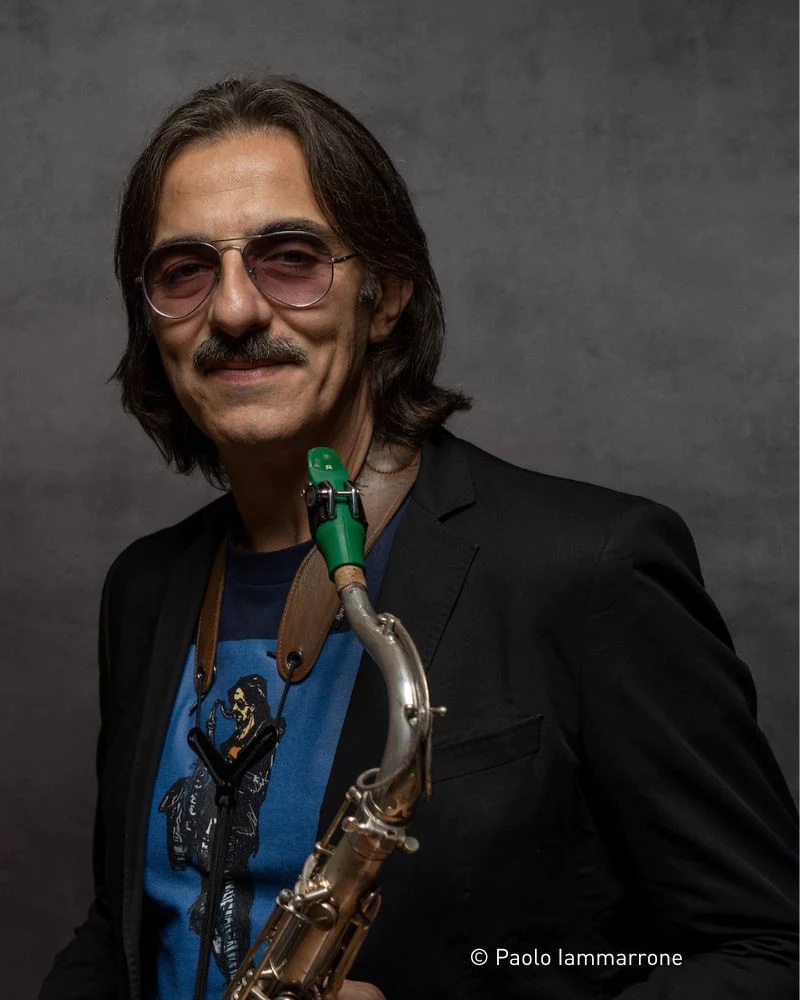
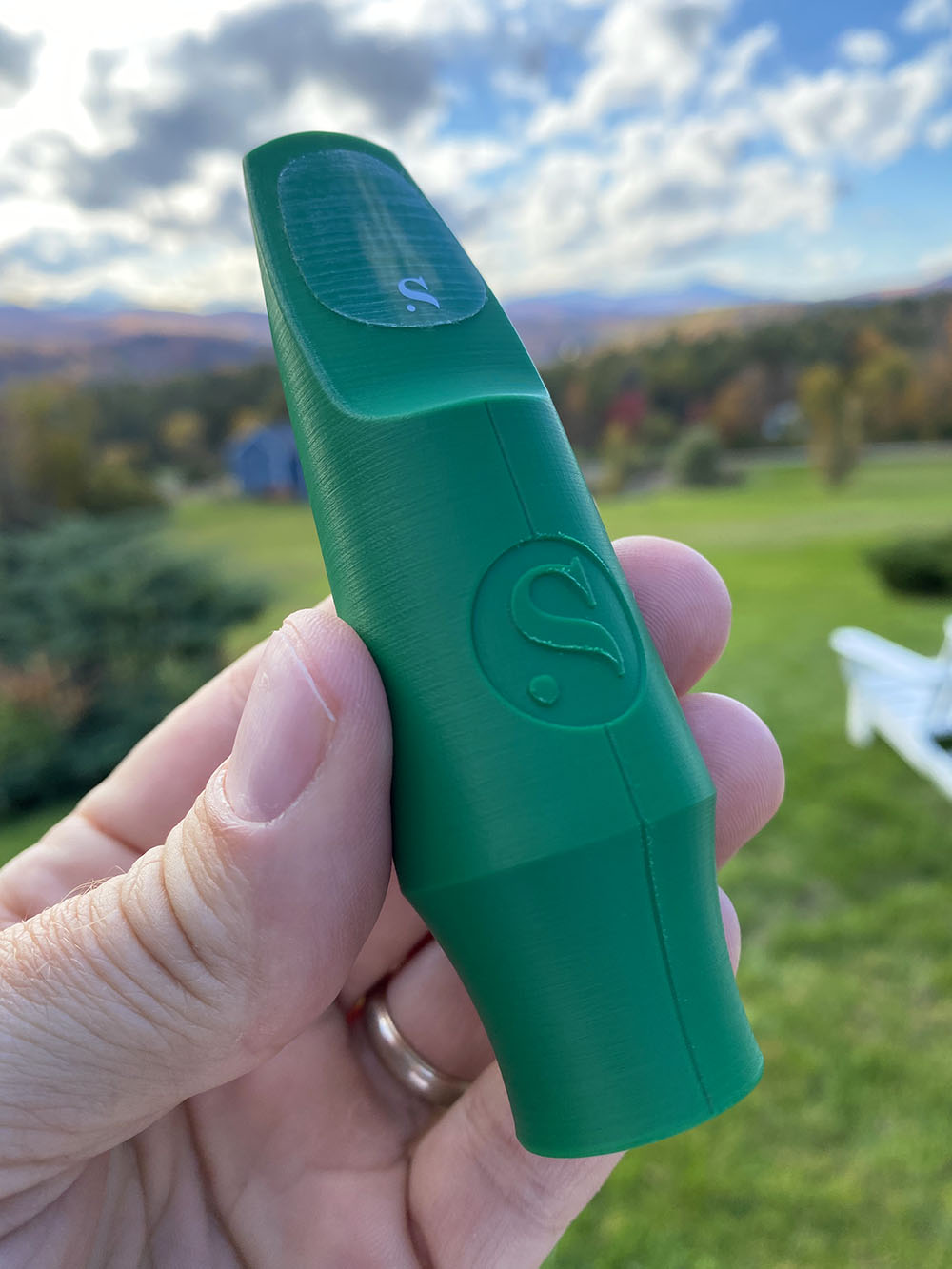

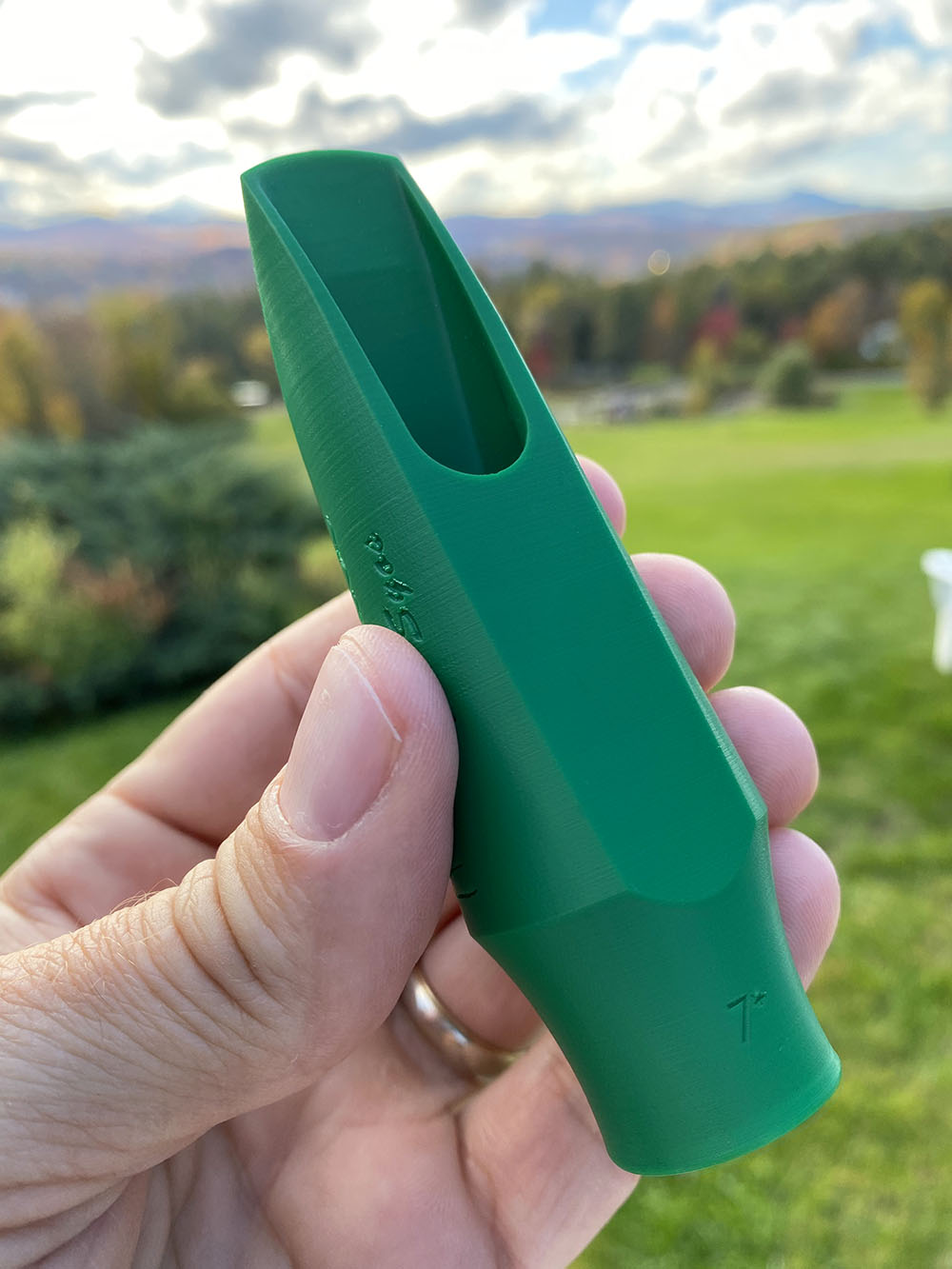

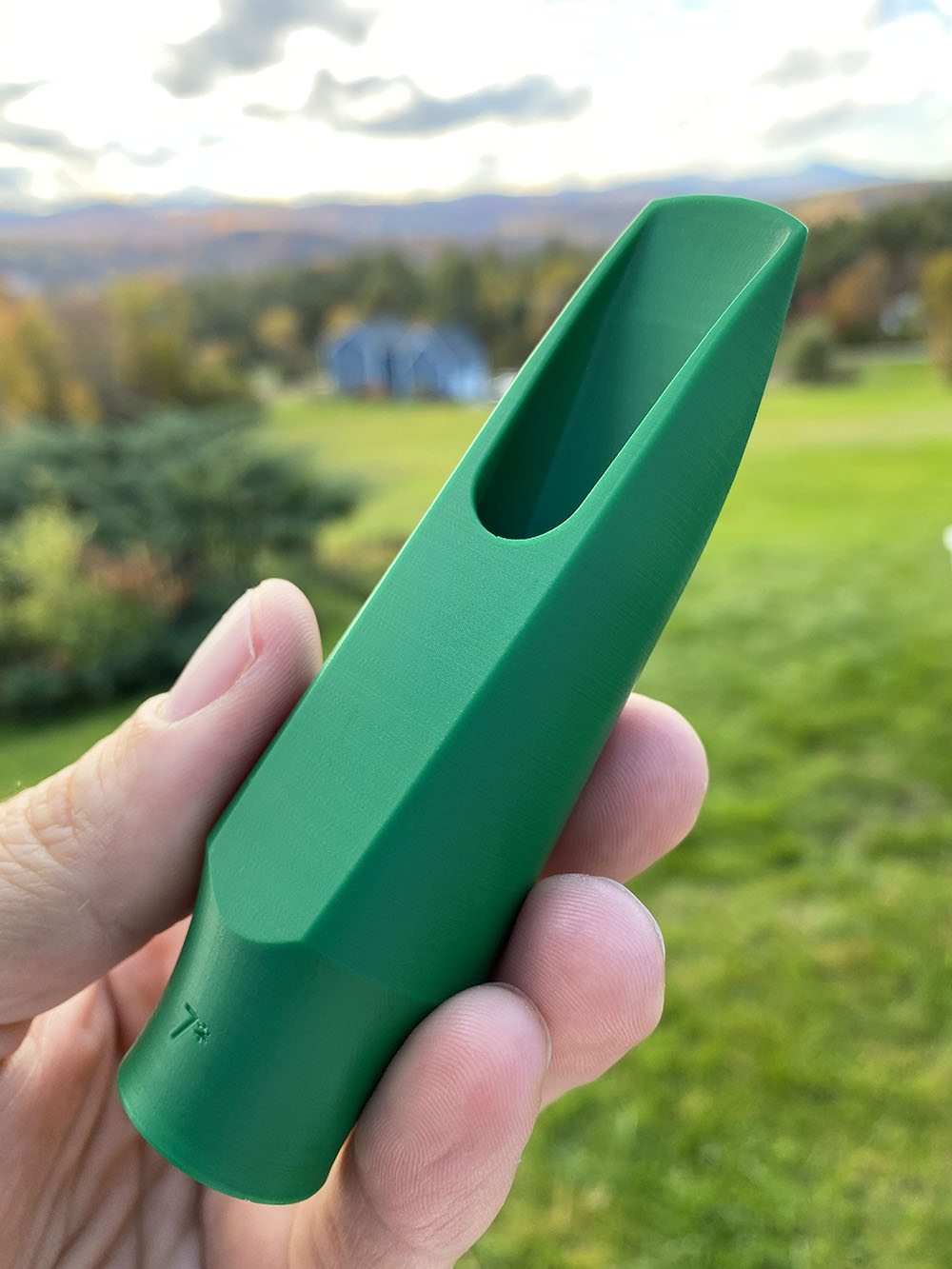

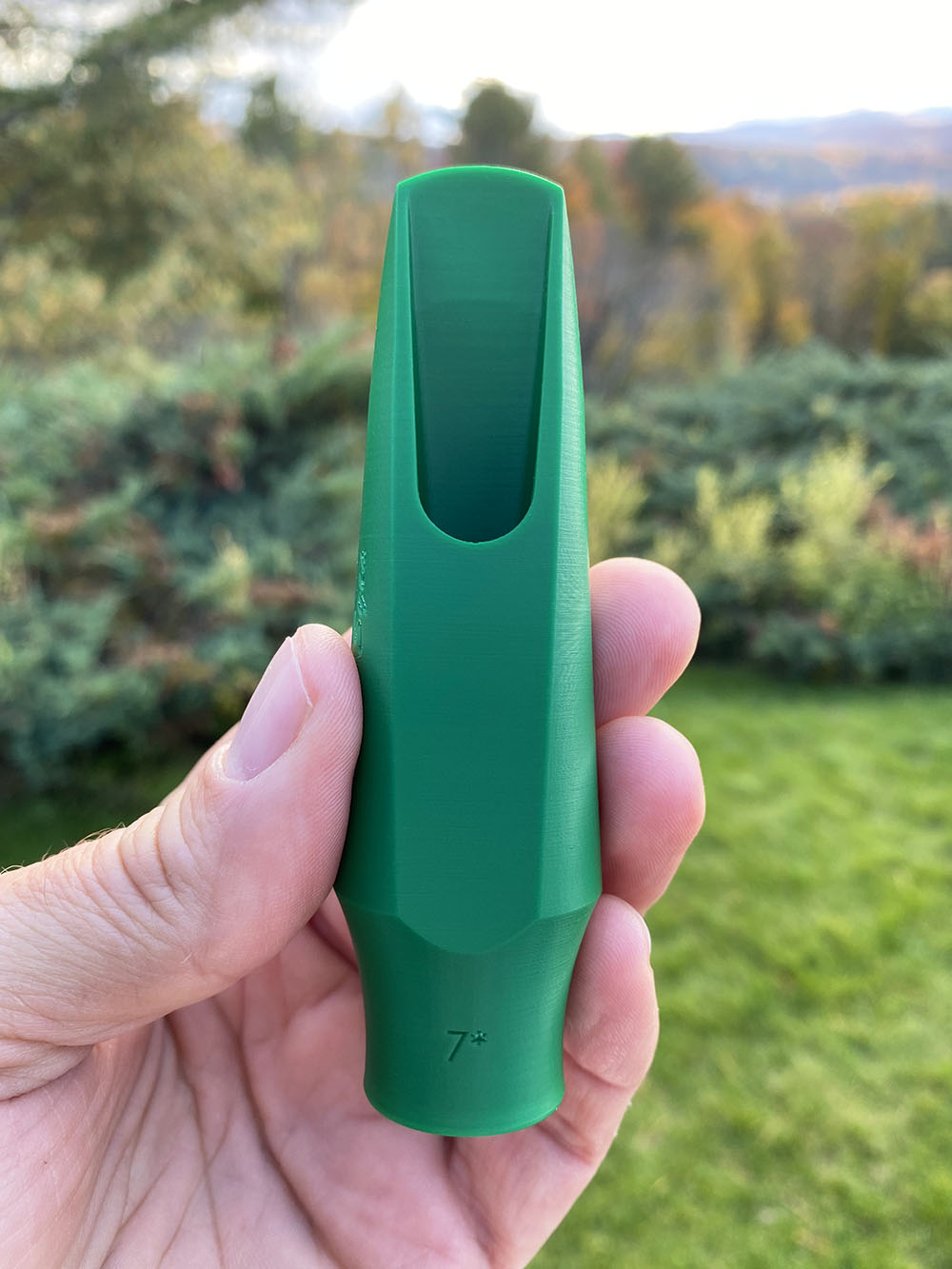
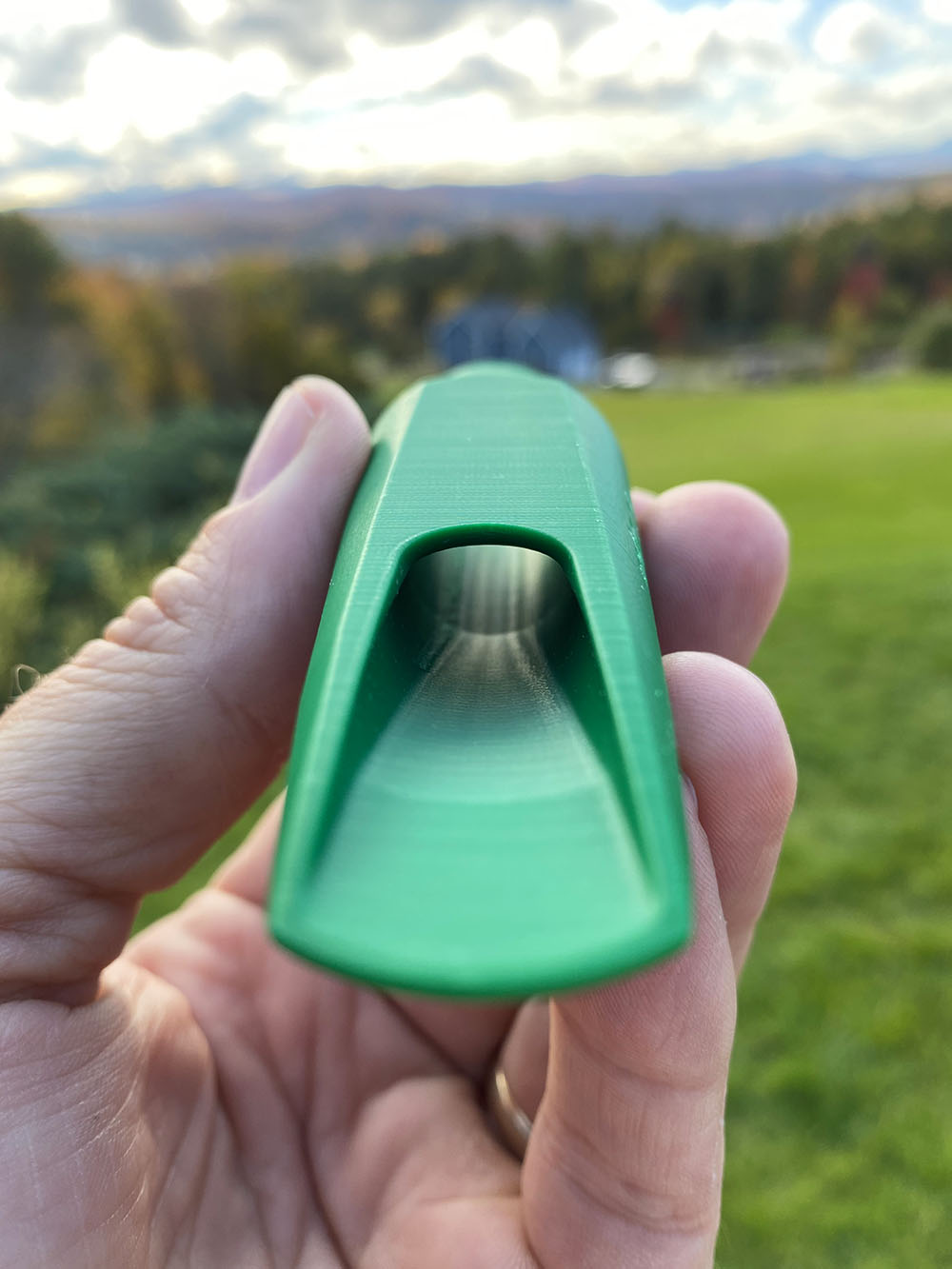




That mouthpiece really speaks.Sounded like you were having a lot of fun with it Steve.
Thanks, Paul!
Thanks Steve. Max’s sound is really good and if he indeed uses this mouthpiece to make that sound, there is no excuse left to point at material or accuracy of finish as the drawbacks. I was hesitating on SYOS till now so thank you for this eye-opening experience for me. I have to go back and listen to all SYOS reviews. I listened to one or two more SYOS reviews and they sounded good too.
I think one attribute that I noticed in the previous listenings and this one too is the fuzzy soft notes which make the highs to be bearable for my ears with tinnitus. I thought it is the contribution of the imperfection of the texture back then but this time I heard a more defined and less fuzzy tone with BSS reed. I found Rigotti 3.5 reed had more pleasing loud notes though, very organic, and complex enough.
One attribute that was present in both Rigotti and BSS reeds (which I associate with the mouthpiece design) is how singing quality the tone is. May be a bit more singing quality for the Rigotti reed. I think the small chamber and the baffle profile caters to eliminate exaggerated highs and lows and you end up noticing this nice mid-range tone that contributes well to create the singing quality of the sound that works well for both bebop and more modern taste perhaps. Thanks again for this review and allowing me to learn something new! 🙂
Arya, Thanks again for chiming in with your thoughts and impressions. I find you opinion very insightful.
One question on this statement that you wrote:
Did you mean to write “unbearable” or was “bearable” correct? Thanks, Steve
Hi Steve, I found that the fuzzy sound that perhaps is less efficient way of reed tip sealing the tip rail on its fast vibration (therefore a bit of air mixes in) allows less high frequency accumulation which means it is more bearable for sensitivity of my ears to those high frequencies and therefore I can focus more on enjoying and hearing the overall tone and I think that is part of my hearing singing tone experience. Perhaps many mouthpiece sounds already have their singing tone embedded in it but they are masked out by accentuation of some frequencies. It reminds me of making Spicy food that spice compliments the taste but beyond a certain amount it takes over the overall taste of food like you can’t appreciate subtle tastes of different vegetables in a veggie stew. And a relatively high baffle mouthpiece with less buzz at the very tip of the baffle has a different tone than a lower baffle mouthy with a more efficient baffle near the tip rail.
What is the cost of this Reed???
You mean mouthpiece? I believe this one is 225 right now.
The other mouthpiece with sort of that tone character (fuzzy edges and narrowed down chamber (walls thickening towards the center of the chamber but not as much is the 10mFan Celebration) and relatively thick side rails with same sort of singing tone quality and nice mid-range frequencies is 10mFan’s Celebration by Brian Powell. Although that mouthpiece has a shorter baffle and not as small chamber as this one. I personally like narrowed down chamber. The air gets through more efficiently (can get louder) and easier to control and better pitch and uniformity of tone across all registers.
I prefer the soundclip with the Rigotti reed.
Listening to Max’s audio clip, wonderful nice phrasing, it seems to me a different sound than Steve’s soundclips: from Max’s soundclip I perceive a big, powerful and loud sound but, for what I perceive through my computer, too little defined and complex.
From what little I perceive and “feel”, the plastic mouthpieces and new materials seem to me to present these problems mentioned. But can I be wrong.
Perhaps I prefer a less voluminous but more defined and complex sound with more projection ((also to avoid probable problems with the hearing system and from neighbors)… Sorriso
Possibly it’s a microphone problem, I don’t understand anything about microphones and sound electronics; I need to listen live and, above all, try.
PS: if I may (almost) joke: long live Mediterranean cuisine: legumes, vegetables, fruit, wholemeal pasta and bread, and some spices without overdoing it (this latter case also to avoid hemorrhoids! Ha, ha, ha!).
No meat.
Giuseppe.
How would you compare it to a Navarro BopBoy? The characteristics appear similar. Kind regards Hannes
Yeah , I think they are a bit similar in sound concept but it has been so many years since I reviewed the Navarro BopBoy that I don’t feel like I have a good enough remembrance of it to adequately compare it in detail to the Syos Max Ionata mouthpiece. Sorry I couldn’t be more helpful. I would suggest listening to the sound clips on quality speakers or headphones and seeing if you hear the differences between the two. Steve
As always, another fantastic review, Steve.
Can you comment on similarities between this piece and the Drake FG?
I adore Max’s music and his sound. I play the Drake FG when I need to be heard and project, but it is a brighter, perhaps more focused than I would like for most occasions. Can you comment on similarities and differences? To my ear on your tracks, the FG does sound brighter and edgier. The Syos a bit warmer, perhaps fuller?
Yes, The Drake FG is much brighter and more focused than the SYOS Max Ionata. The SYOS piece is really a great sounding mouthpiece. Les bright than the FG but can still hold it’s own for brightness when you really push it. I think if I was playing pop, R&B and modern stuff I would go with the Drake FG. If I was playing more jazz sets I would lean towards the SYOS Max Ionata.